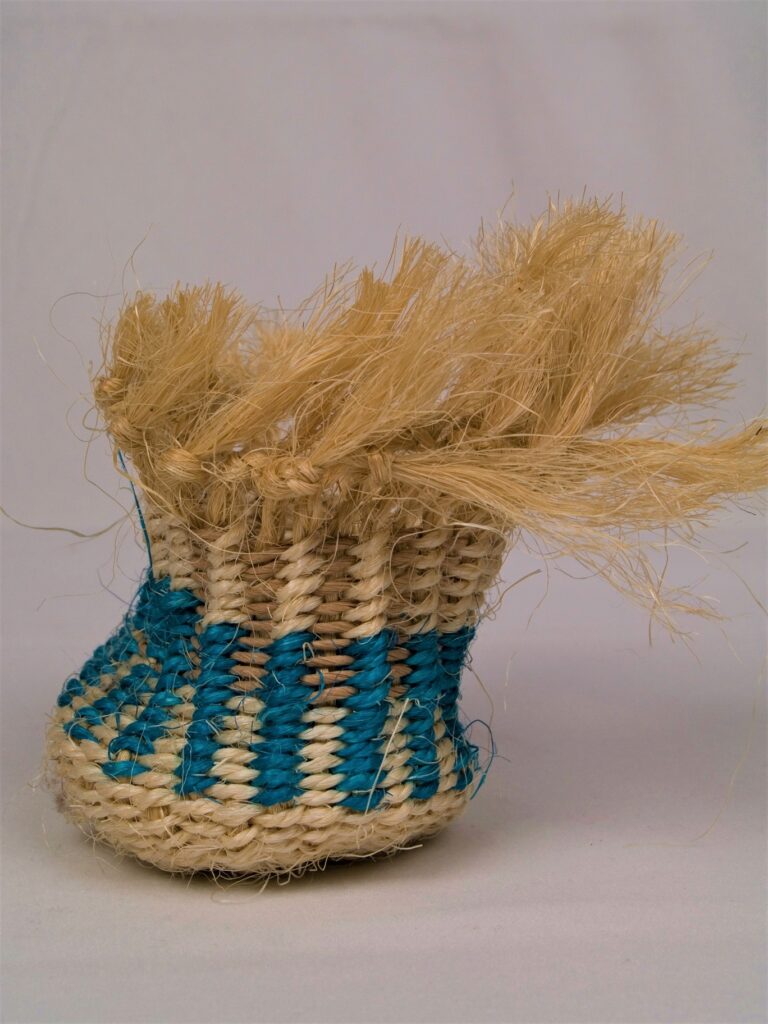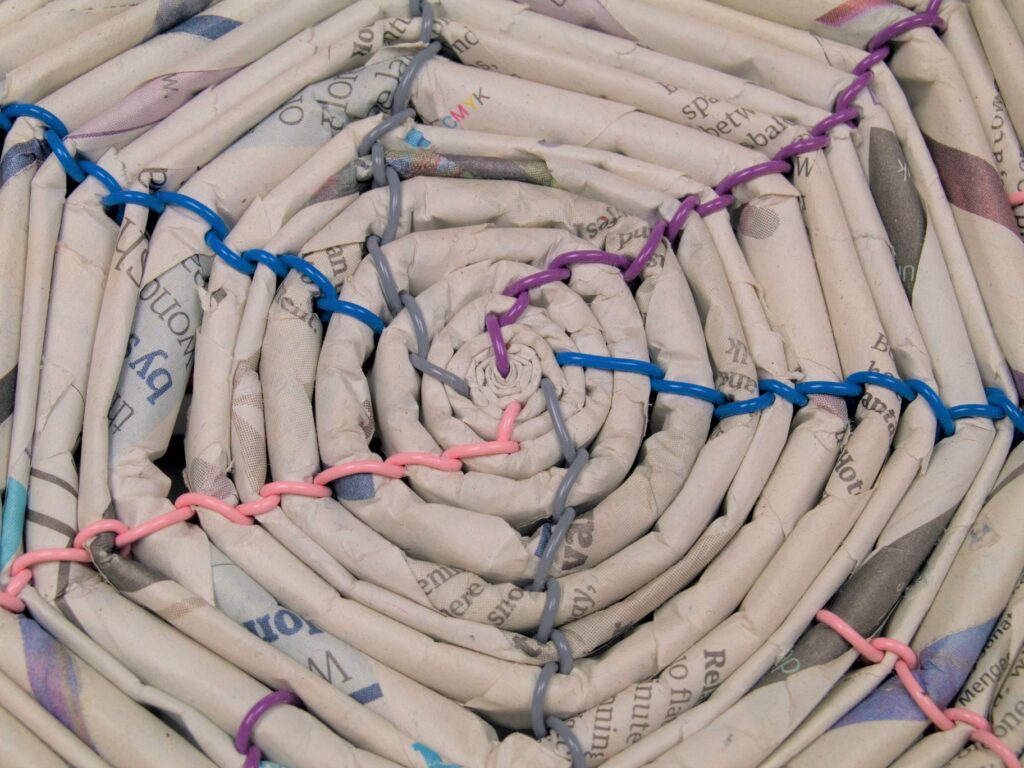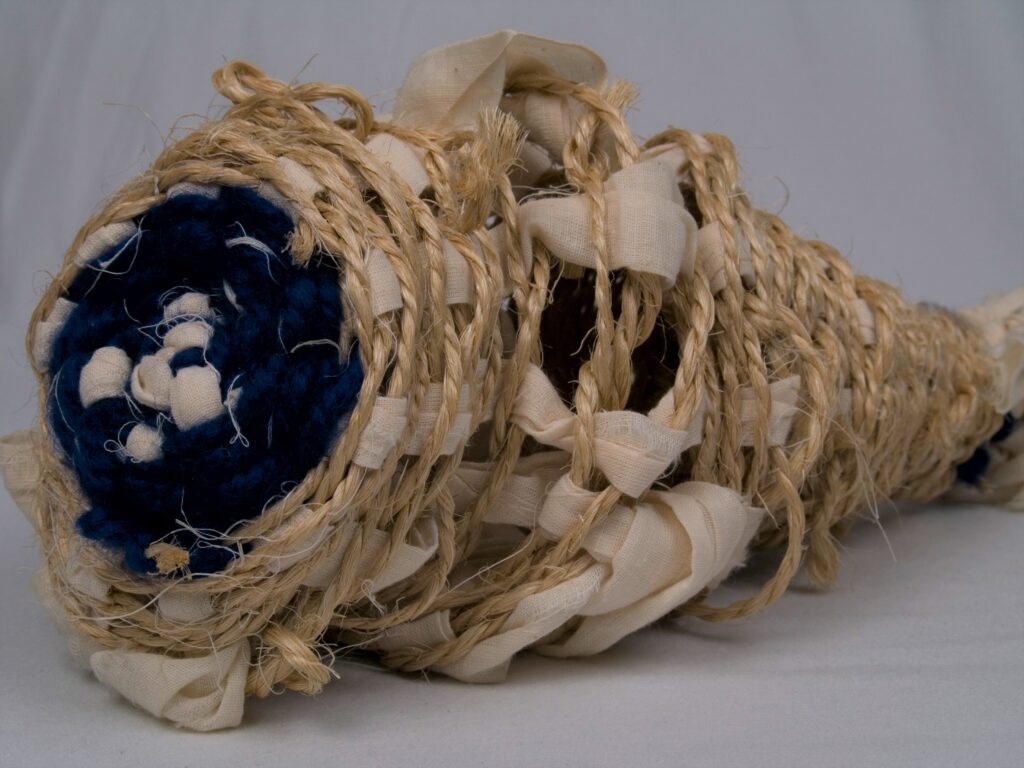


Basketry
Techniques and experiments 2007 +
After graduating from Goldsmiths College, I wanted to see how the weaving process could become sculptural and basketry was the natural next step. Basketry is another fascinating craft with a history entwined in human development. The first woven fences led to architectural forms, weaving a basket enabling gathering of foods – fundamental, simple and important innovations.
Of course, baskets were made from their local environmental materials, embodied in the area and connected to the people that made them. This is why I wanted to use the waste products I saw in abundance around me – newspaper. This led to making artworks such as Indevelopment (2008) and continues to influence interests and thinking.
In the book, Braiding Sweet Grass by Robin Wall Kimmerer, there is a chapter on the black ash basket. It speaks of how the baskety makers are so intune with their environment to pick the tree at the right time, how it is important to honour the years of a tree’s life that is now used to make something else – and many more poignant observations on the craft, and the affect of displacing people from their environment.
Thank you to the great teachers and basketry legends Polly Pollock and Shuna Rendel at City Lit in London.
